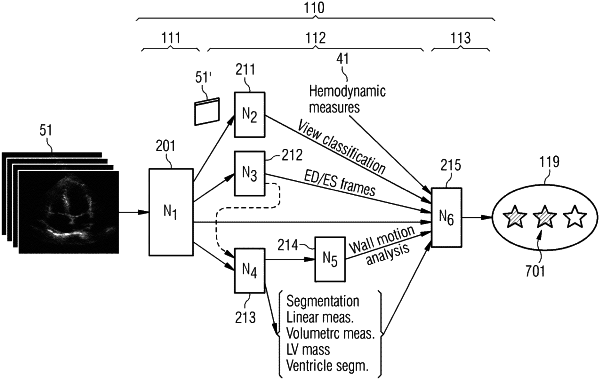| CPC A61B 5/308 (2021.01) [A61B 5/026 (2013.01); A61B 5/7267 (2013.01)] | 22 Claims |

|
1. A method, comprising:
processing at least one input dataset using a multi-level machine learning processing algorithm, one or more of the at least one input dataset comprising imaging data of a cardiovascular system of a patient,
wherein the multi-level processing algorithm comprises a multi-task level and a consolidation-task level, wherein an input of the consolidation-task level is coupled to an output of the multi-task level, wherein the multi-task level is configured to determine multiple diagnostic metrics of the cardiovascular system based on the at least one input dataset, wherein the consolidation-task level is configured to determine a fitness of the cardiovascular system of the patient,
wherein the multi-level processing algorithm further comprises a pre-processing level, the pre-processing level being configured to determine a quality index for each one of the at least one input dataset, the pre-processing level further configured to filter at least one of the at least one input dataset based on the quality index and/or determine a confidence level of the fitness based on the quality indexes.
|